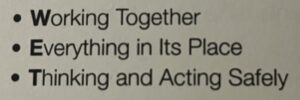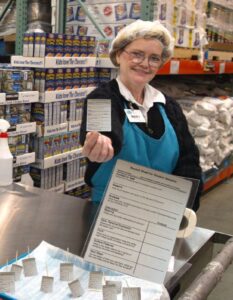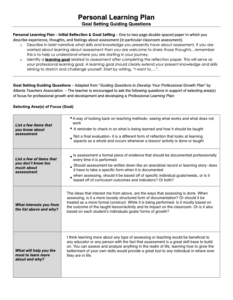During this week’s class and Learning circle, we went over chapters 7 & 8 from the Making Classroom Assessment Work textbook. We also got to do another Poll Guru about highlighting aspects from the chapters and from our Learning Circles, which is always a plus in my books. Chapter 7 was about Using assessment to guide instruction. There was a useful acronym called W.E.T which stands for W- working together, E- everything in its place, T- thinking and acting safely. (Davies, 2020, p. 64). Even though I have never heard of this acronym before, I have believed in the components ever since I started working with other people in my environment and those who work with me. It is important to instill these goals and ideas when students are working with their peers and even with themselves to provide a healthy, organized, and successful work period. This is why my symbol for this week in the W.E.T. acronym. Chapter 8 was about collecting, organizing, and presenting evidence.
We were given an example of what to do for a future assignment, the sample given was a great way to highlight key points given from a previous chapter (4)(Davies, 2020, p. 33) which is also from the Making Classroom Assessment Work textbook . We were given a full video, which followed with descriptions of what worked well during that assignment- this gave us criteria to base our own assignments off of, which was another perspective/ way to see how to perform the assignment.
During the Poll Guru, we are usually asked questions about our own thoughts on how we were doing, how our peers are doing, and what we think about multiple topics and ideas. This relates to the topics of self assessment and student involvement during the chapters we went over “Engaging students in assessment in the service of learning results in students both learning and learning how to learn”(Davies, 2020, p. 63). This is a great way of applying the W.E.T. acronym, the idea of working together as a group for our own assessment and opinions where everyone is coming from in a safe space way.
During the Learning Circle this week, there were only four of us in the group, compared to our usual seven. However, the conversation flowed just as smoothly and effortlessly. This week some of us had to do a repeat job, which worked out as a benefit as we already had experience in those positions. We used the topics and outlines of the two chapters to guide conversation, however, we went on the path of talking about personal experiences. Usually we talk about our thoughts on the ideas or strategies at hand and why we think so, and then talk about it in reference to being in a classroom. However, I found that we primarily talked about personal moments and had a lot in common, to then reflect on it as a group. One big idea that was brought up was “rewriting tests”. We look at this point from the side of us as students, and us now as (future) educators. Many of us struggle with math. We all found that rewrites are a useful way to adapt existing testing models in a way that can be beneficial to all learners. We found that having the safety net of a rewrite helped with our anxious performances. We also found that when we did have to take the retest, it was usually in a different space where there were less students, and more opportunities and feelings of safety to ask for help.
Without consciously applying the W.E.T. method to our conversation, we still did! We worked together on figuring out why we as students might have felt a certain way, while also figuring out why we as teachers may still use or may not use certain methods. We concluded our thoughts in a safe space created by working together as a group and seeing that everything is in its place and whether or not it should be moved.
Thank you for reading!
Best, Baylee

This is a photo I took of page 64 of the Making Classroom Assessment Work textbook of the W.E.T acronym symbol for this week (Davies, 2020, p. 64).
Davies, A. (2020). Making Classroom Assessment Work (4th ed.). connect2learning.






